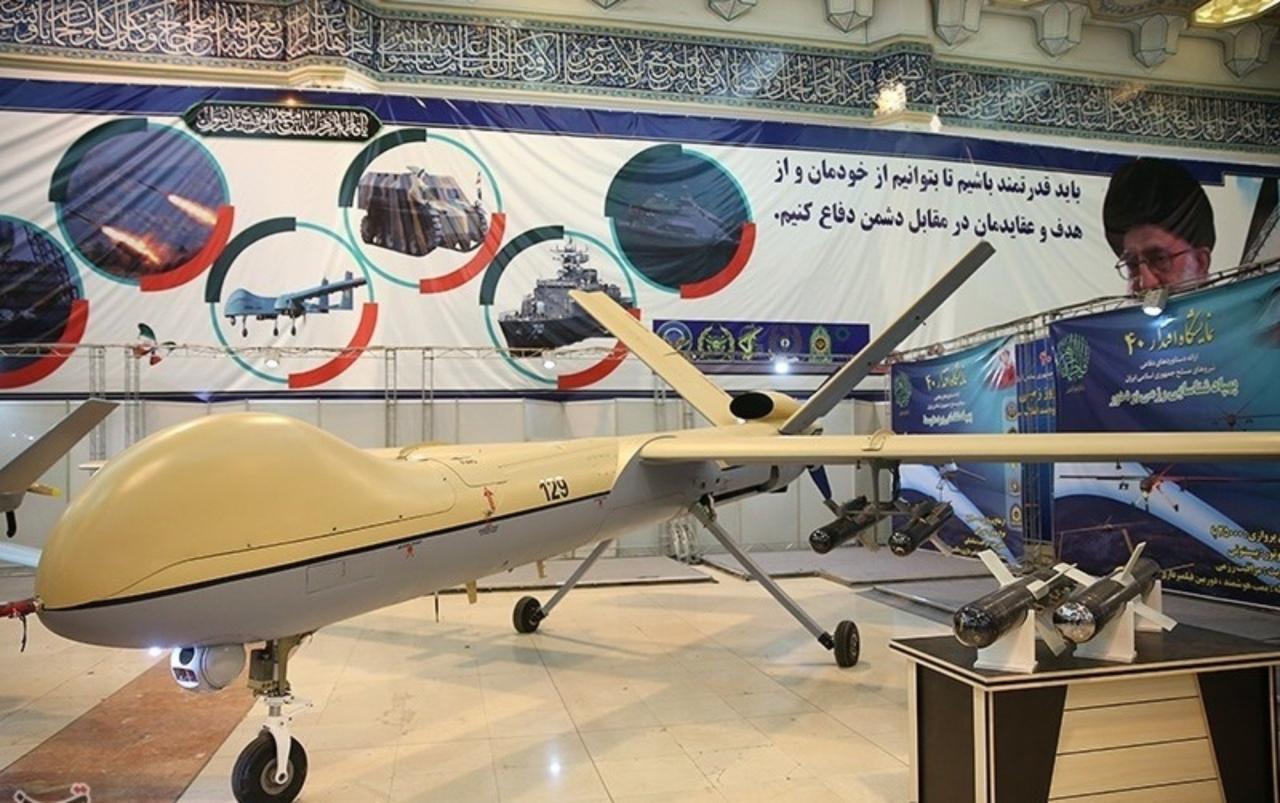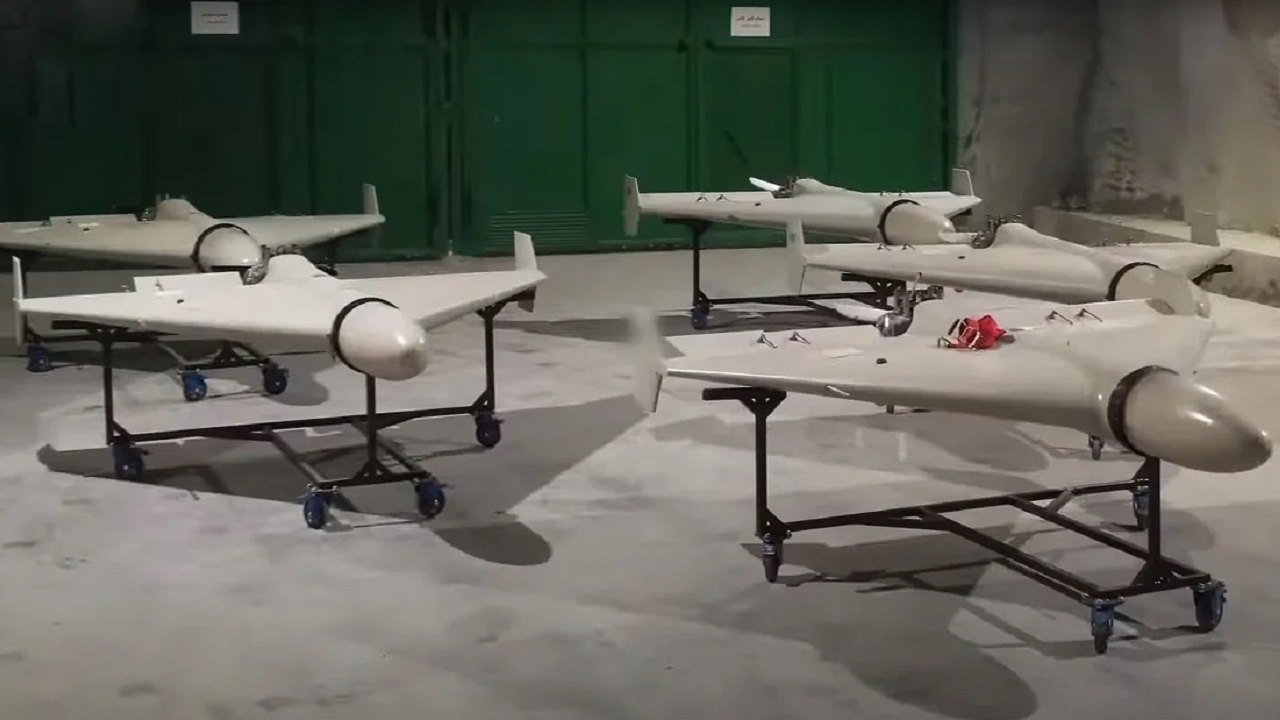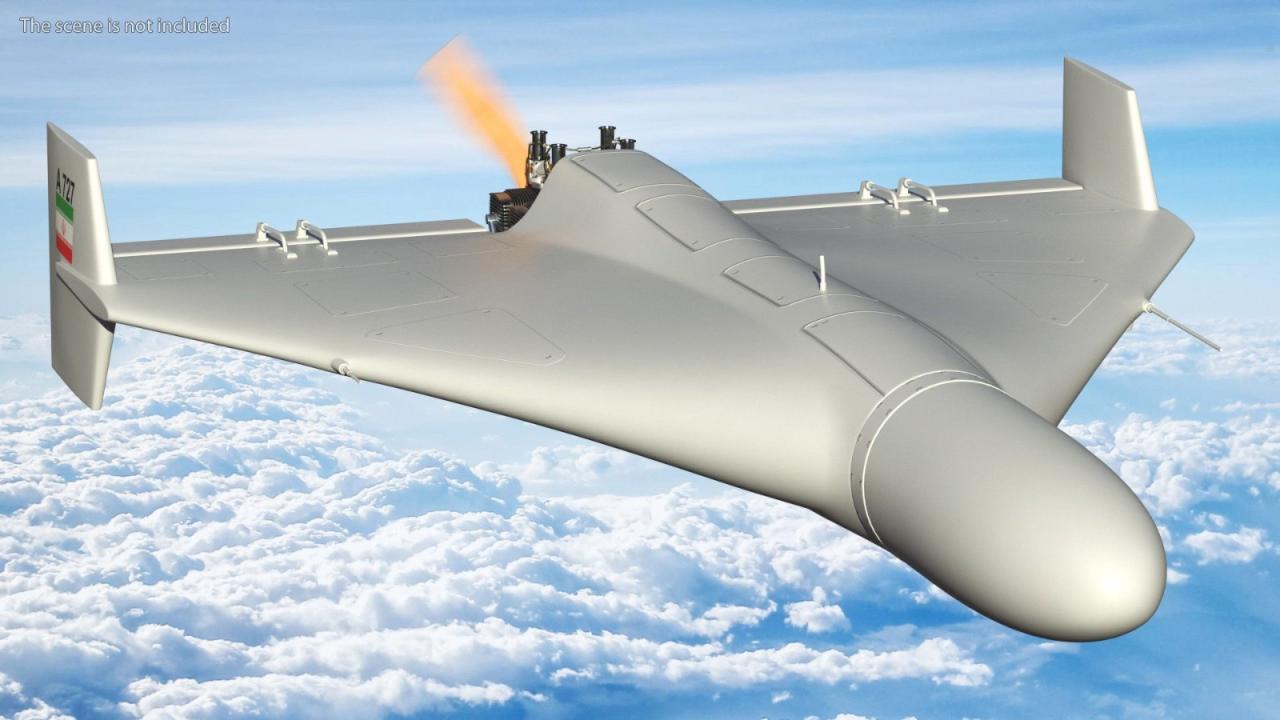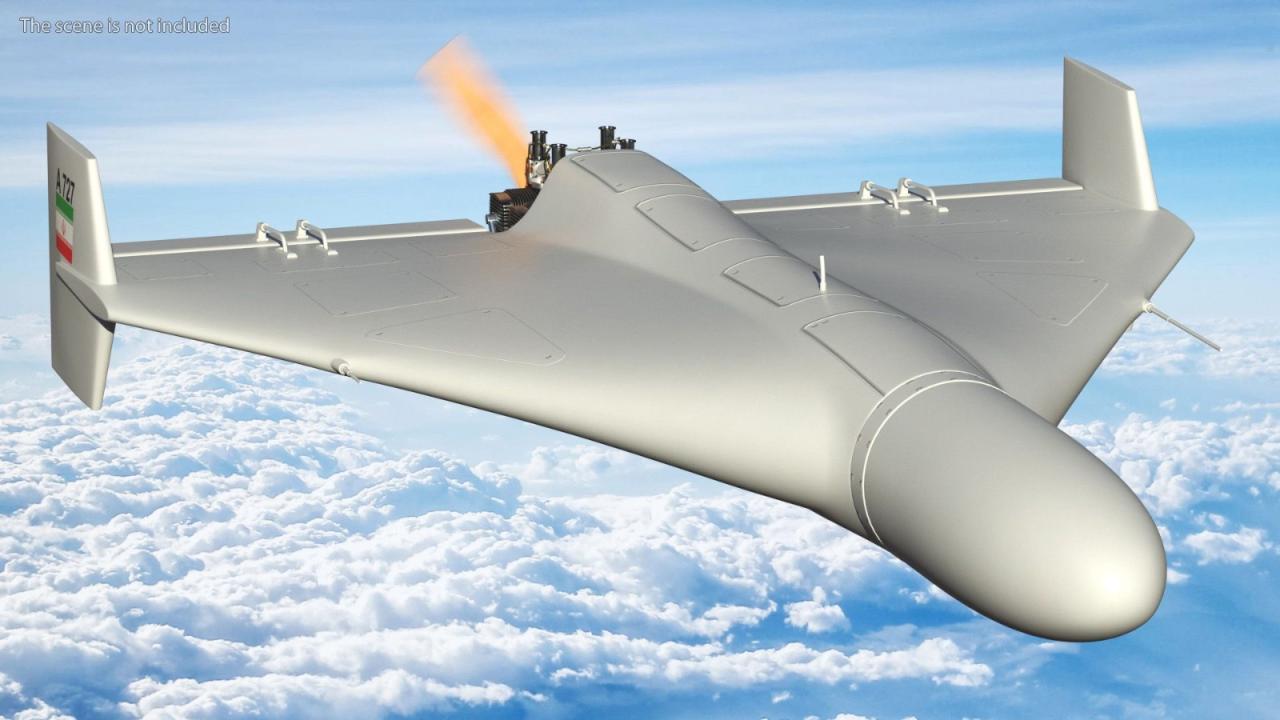Shahed drones, inexpensive and readily available, have significantly altered modern warfare. Their deployment in various conflicts has sparked debate regarding their effectiveness, ethical implications, and the countermeasures needed to neutralize their threat. This analysis delves into the technical specifications, operational capabilities, deployment history, countermeasures, and overall impact of these unmanned aerial vehicles.
From their relatively simple design to their surprisingly sophisticated impact on global conflicts, the Shahed drone represents a turning point in asymmetric warfare. Understanding its capabilities and limitations is crucial for comprehending the evolving landscape of modern military strategy.
Shahed Drone Technical Specifications
The Shahed drone, also known as the Shahed-136, is a low-cost, single-use loitering munition. Its technical specifications are crucial in understanding its capabilities and limitations. A comparison with similar drones highlights its unique design choices and performance characteristics. Material selection significantly influences its cost-effectiveness and operational lifespan.
Shahed Drone Key Specifications
| Specification | Value | Specification | Value |
|---|---|---|---|
| Wingspan | 2.5 meters (approx.) | Weight | 200 kg (approx.) |
| Length | 3.5 meters (approx.) | Payload Capacity | 40 kg (approx. warhead) |
| Range | 1000-2500 km (depending on variant and conditions) | Endurance | 10-14 hours (depending on variant and conditions) |
| Propulsion | Internal combustion engine | Guidance | GPS-aided inertial navigation |
Comparative Analysis of Technical Specifications
Compared to other loitering munitions like the Switchblade 600 or the Harop, the Shahed drone boasts a significantly longer range and endurance, making it suitable for long-range attacks. However, its lower precision and heavier warhead compared to some alternatives may indicate a trade-off between cost-effectiveness and accuracy. The use of a less sophisticated guidance system also contributes to its affordability.
Materials and Construction
The Shahed drone is primarily constructed from composite materials and readily available components, contributing to its low production cost. The use of these materials, while less durable than those used in more advanced drones, allows for mass production and a rapid deployment cycle.
Shahed Drone Operational Capabilities
Understanding the operational modes, flight control, navigation, and targeting systems of the Shahed drone is essential to assessing its overall effectiveness. These aspects contribute to its strategic and tactical applications.
Operational Modes and Applications
- Loitering Mode: The drone circles a target area waiting for the optimal moment to strike.
- Cruise Mode: The drone flies to a predetermined target location and engages.
- Suicide Mode: Upon reaching its target, the drone impacts, detonating its warhead.
These modes allow for flexible deployment in various scenarios, from targeting stationary infrastructure to engaging moving vehicles.
Flight Control and Navigation
The Shahed drone utilizes a combination of GPS and inertial navigation systems for flight control and navigation. While relatively simple, this system allows for autonomous operation over significant distances. However, its susceptibility to GPS jamming and spoofing is a known vulnerability.
Targeting and Guidance Systems
The Shahed drone’s targeting system relies primarily on pre-programmed coordinates and GPS navigation. While not known for pinpoint accuracy, its large warhead can still inflict significant damage. Improvements in targeting precision have reportedly been made over time.
Shahed Drone Deployment and Use
The Shahed drone’s deployment across various geographical regions and conflicts provides insights into its strategic impact. Examining both successful and unsuccessful missions helps understand its limitations and potential.
Geographical Deployments and Conflicts, Shahed drone
A hypothetical map illustrating Shahed drone deployments would show concentrated clusters in regions of ongoing conflict, including the Middle East and Ukraine. The map would depict a significant number of deployments originating from Iran, and subsequent use in proxy conflicts. The intensity of deployment markers would correlate with the frequency of reported Shahed drone activity in those areas.
Examples of Missions
Reports suggest successful Shahed drone missions have resulted in significant damage to military infrastructure and energy facilities. Unsuccessful missions, often attributed to air defenses, highlight the vulnerabilities of the drone to countermeasures. Factors such as weather conditions and operator expertise also play a role in mission success.
Timeline of Significant Events
A timeline would include key dates marking the first reported use of the Shahed drone, significant escalations in deployment frequency, and notable instances of both successful and unsuccessful missions. It would also mark any reported improvements or modifications to the drone’s design or capabilities.
Shahed Drone Countermeasures and Defenses

Various countermeasures have been developed to combat the Shahed drone threat. The effectiveness and cost of these countermeasures vary significantly.
Countermeasures and Defensive Strategies
| Countermeasure | Effectiveness | Cost | Notes |
|---|---|---|---|
| Electronic Warfare (Jamming) | Moderate to High (depending on implementation) | Moderate to High | Effectiveness can be reduced by sophisticated jamming techniques. |
| Anti-aircraft Artillery | Low to Moderate | Low to Moderate | Requires accurate targeting and sufficient density of fire. |
| Man-Portable Air Defense Systems (MANPADS) | Moderate to High | Moderate | Effective but requires skilled operators and precise targeting. |
| Drone-Specific Counter-UAS Systems | High | High | Often utilizes directed energy weapons or net systems. |
Effectiveness of Air Defense Systems
The effectiveness of air defense systems against Shahed drones varies greatly depending on the system’s capabilities, the drone’s flight path, and environmental factors. Systems with advanced detection and tracking capabilities, along with effective engagement mechanisms, prove more successful.
Hypothetical Counter-Drone Operation
A scenario depicting a counter-drone operation against a swarm of Shahed drones might involve a layered defense system. Early warning radar would detect the incoming swarm, followed by electronic jamming to disrupt their navigation. Simultaneously, anti-aircraft artillery and MANPADS would engage, while specialized counter-UAS systems would target individual drones. Coordination and communication between different defense elements would be crucial for success.
Shahed Drone Impact and Implications
The widespread use of the Shahed drone has significant strategic, tactical, and economic implications. Its impact on modern warfare is undeniable.
Strategic and Tactical Implications

The Shahed drone’s relatively low cost and ease of production have allowed for widespread proliferation, significantly altering the dynamics of asymmetric warfare. Its long range and endurance have extended the reach of attacks, impacting military strategy and resource allocation.
Economic Impact
The production and deployment of Shahed drones have significant economic consequences for both the manufacturer and the countries deploying them. The low production cost allows for mass deployment, but the destruction caused by the drone attacks creates significant economic losses for the targeted countries.
Impact on Modern Warfare

The Shahed drone represents a shift in modern warfare towards the increased use of low-cost, expendable munitions. This has forced a reevaluation of traditional air defense strategies and resource allocation.
Shahed Drone Manufacturing and Production
Understanding the manufacturing process, supply chain, and production costs of the Shahed drone helps in assessing its long-term impact and potential for further proliferation.
Manufacturers and Suppliers
While precise details about the manufacturers and suppliers remain largely undisclosed, information suggests Iranian entities are primarily involved in the production. The use of readily available components suggests a relatively decentralized and adaptable supply chain.
Manufacturing Process and Supply Chain
The manufacturing process is likely streamlined to facilitate mass production, utilizing readily available materials and relatively simple assembly techniques. The supply chain, though largely opaque, seems to leverage both domestic and potentially international sources for components.
Production Costs
The Shahed drone’s production cost is significantly lower than more advanced loitering munitions. This low cost contributes to its widespread availability and deployment, impacting the balance of power in various conflicts.
The Shahed drone’s impact extends far beyond the battlefield. Its relatively low cost and ease of production have democratized access to drone technology, changing the dynamics of conflict and forcing a reassessment of traditional defense strategies. Further research into effective countermeasures and international cooperation will be vital in mitigating the risks associated with this increasingly prevalent technology.
FAQ Section
What is the range of a Shahed drone?
The Shahed drone, known for its controversial use in various conflicts, has garnered significant attention. Incidents involving similar unmanned aerial vehicles highlight the broader issue of drone safety, as evidenced by recent news reports detailing a concerning increase in drone crashes in New Jersey. This underscores the need for improved regulations and technological advancements to mitigate risks associated with the proliferation of drones like the Shahed, ensuring safer skies for everyone.
The range varies depending on the specific model, but generally falls within the range of several hundred kilometers.
How are Shahed drones guided?
Guidance systems vary but often involve a combination of GPS, inertial navigation, and potentially image recognition for terminal guidance.
The Shahed drone, a relatively inexpensive and readily available unmanned aerial vehicle, has gained notoriety for its use in various conflicts. Incidents involving similar unauthorized drone activity, such as the recent nj drone shot down , highlight the growing need for effective counter-drone measures. The proliferation of Shahed drones, therefore, necessitates a comprehensive approach to airspace security and defense strategies.
What is the payload capacity of a Shahed drone?
Payload capacity is typically limited, usually carrying a relatively small warhead or explosive charge.
Are Shahed drones reusable?
Generally, Shahed drones are considered expendable, designed for one-way missions.
